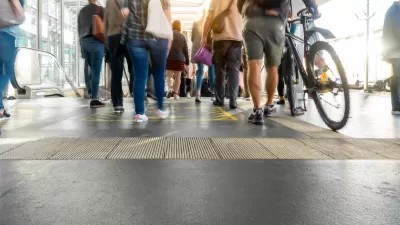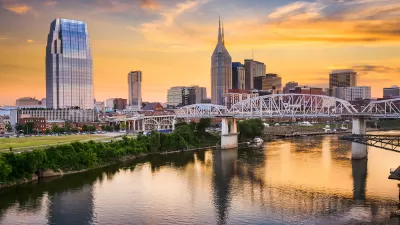Building megacities needs to be a multidisciplinary effort, according to architect and designer Sean C. S. Chiao.
Chiao works on megacity projects in China, and argues that the future of big city building needs to integrate many minds, and combine the efforts of private industry and the public sector.
"[U]rbanization is happening fastest in developing countries such as China, where I lead a team of designers, architects, engineers, and management-service specialists. China already has seven cities with more than ten million people-Beijing, Shanghai, Chengdu, Chongqing, Guangzhou, Shenzhen, and Tianjin-and Wuhan is quickly hitting the ten million–resident mark. For China, with its high population density and its land and water scarcity, megacity development is probably the most efficient option. Chinese megacities will be hubs for jobs, culture, leisure, and education, a model that will be radically different from the manufacturing-center model that forms the basis of many Chinese cities today. Chinese megacities will also, very likely, be hubs for small and medium-sized satellite cities that will spring up around them.
As an architect and urban designer, I believe that the right approach to both retrofitting an existing megacity or building a new one from scratch is holistic planning, with commitment flowing from both the public and private sectors. For Chinese megacities to function properly, there must be clear state policies on how to build and run them, as well as strict audits to ensure that the laws are followed. Rules and guidelines on how to build a "green" infrastructure-from buildings, bridges, transport networks, and sanitation systems to power grids, incentives for consuming power efficiently, and disincentives for energy abuse and malpractice must be mandated and put into practice. Continuous investments are required from both the government and the private sector."
FULL STORY: Planning China’s megacities

Alabama: Trump Terminates Settlements for Black Communities Harmed By Raw Sewage
Trump deemed the landmark civil rights agreement “illegal DEI and environmental justice policy.”

Planetizen Federal Action Tracker
A weekly monitor of how Trump’s orders and actions are impacting planners and planning in America.

The 120 Year Old Tiny Home Villages That Sheltered San Francisco’s Earthquake Refugees
More than a century ago, San Francisco mobilized to house thousands of residents displaced by the 1906 earthquake. Could their strategy offer a model for the present?

In Both Crashes and Crime, Public Transportation is Far Safer than Driving
Contrary to popular assumptions, public transportation has far lower crash and crime rates than automobile travel. For safer communities, improve and encourage transit travel.

Report: Zoning Reforms Should Complement Nashville’s Ambitious Transit Plan
Without reform, restrictive zoning codes will limit the impact of the city’s planned transit expansion and could exclude some of the residents who depend on transit the most.

Judge Orders Release of Frozen IRA, IIJA Funding
The decision is a victory for environmental groups who charged that freezing funds for critical infrastructure and disaster response programs caused “real and irreparable harm” to communities.
Urban Design for Planners 1: Software Tools
This six-course series explores essential urban design concepts using open source software and equips planners with the tools they need to participate fully in the urban design process.
Planning for Universal Design
Learn the tools for implementing Universal Design in planning regulations.
Clanton & Associates, Inc.
Jessamine County Fiscal Court
Institute for Housing and Urban Development Studies (IHS)
City of Grandview
Harvard GSD Executive Education
Toledo-Lucas County Plan Commissions
Salt Lake City
NYU Wagner Graduate School of Public Service





























